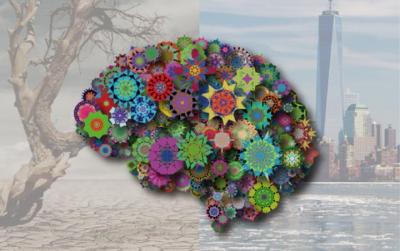
Image credit: University of Tsukuba
Given the choice between earmuffs and suntan lotion, most people would choose to have the earmuffs on a cold winter day and the lotion on a sunny day at the beach. This ability to place different values on objects depending on the environmental context is something that we do all the time without much thought or effort. A new study led by Assistant Professor Jun Kunimatsu at the University of Tsukuba in Japan and Distinguished Investigator Okihide Hikosaka at the National Eye Institute (NEI) in the United States has discovered the part of the brain that allows this type of learning to occur.
"Value and reward are known to be encoded in the part of the brain called the basal ganglia," explains Dr. Hikosaka. "We set out to identify the specific neuronal circuits underlying environment-based value learning."